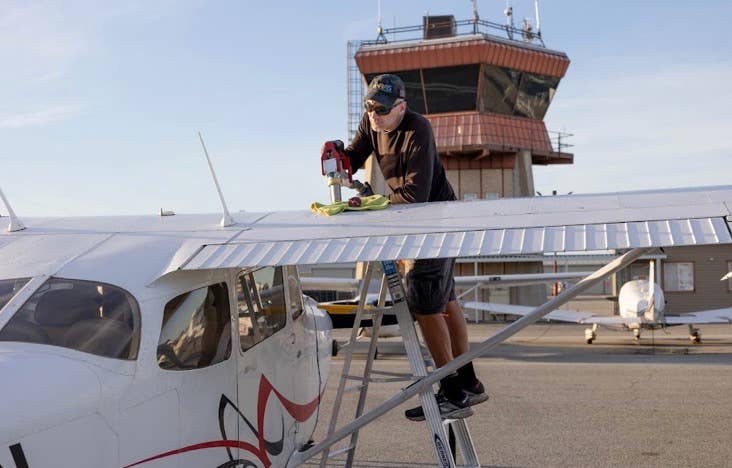
You talk too much
You even worry my pet
You just talk...
Talk too much
Joe Jones
What a nice day to go flying! I had spent an hour or so committing flagrant acts of aviation with my rag-wing Cessna 140, and after the obligatory three touch-and-goes, I parked it next to my friend’s hangar. You know, the one with the Cub.
He was working on getting his Cub “up to snuff,” as we used to say back during the Victorian Age, and I found him polishing that little faux spinner thing on the front of the propeller.
We barely had time to get our diet sodas out of his fridge and plant our butts into our lawn chairs when I thought I heard the sound of huffing approaching from the flight school ramp.
Yes, I could hear audible huffing, and it was coming from a young man who was clearly in a huff. It was Bert, one of the local flight instructors. He had the earnest look of someone trying to convince you to become a Hari Krishna or buy a timeshare.
“Were you the guy flying the Cessna 120?” he huffed.
No, I said.
“Do you know who flew this thing in the pattern?” he continued to huff as he pointed at my plane.
Yes, that was me, flying my Cessna 140, I said. You might want to check out an aircraft identification book at your library. As you can see, my aircraft has flaps, which is a sure sign that it is not a 120, although 120s are awesome.
He looked chagrinned, and I thought he might be the kind of guy who calls himself a “Certified Flight Instructor.”
Of course, there is no such thing as a Certified Flight Instructor. Look it up, I’ll wait. See? What he and every other CFI on or buried beneath the soil of this planet was and is is a “Certificated Flight Instructor.” This means that he holds a certificate.
Nobody certified him or any other CFI to do anything.
Name-calling aside, I asked what had gotten that raspberry seed caught behind his wisdom tooth. You’ve got to sit down and have a drink, I said. Your sunglasses are getting all sweaty.
He grudgingly sat on the chair provided and began straightening me out.
“I saw you fly your plane for multiple landings while I was flying in the same pattern with my student and you did not make any of the required radio calls. Not one!”
Well, he had me there. I guess not making imaginary required radio calls is a bad thing, but I was curious about which VFR traffic pattern calls I missed.
“You know,” he said. “We are required to make a radio call on Unicom when we are in the pattern saying when we are upwind, crosswind, downwind, final, and taxiing to the ramp.”
Now I see what he was angry about. He was suffering from being a reasonably new CFI. That malady is serious and can make a person think that they know everything and are commanded to share it with a disinterested world.
You must be talking about the VFR traffic requirements listed in section 7-6 of the publication FAA-H-8083-38?
Blank stare from Bert.
Yes, that’s the one, I continued. It does say those are nice to make calls, and the passage infers that the calls are mandatory, but I assure you, my pimply-faced friend, that they are recommended but not required.
This recommendation to fill the airwaves with the dulcet tones of confused and frightened students and instructors has led to a fog of radio chatter that I find off-putting and sometimes dangerous.
As a Certificated Flight Instructor, I know that all of those radio calls might be good practice for students who fear talking on the radio. Still, it takes a primary student’s attention away from flying the aircraft when it is low and slow on base and final.
I personally teach that a call on downwind is fine and efficacious while blurting out every position and feeling you have while you zoom about the pattern is, in the words of Captain Hook from Peter Pan, “bad form.”
Bert was going to give one more shot at regaining the high ground.
“Even with all you said, you should have at least called on the downwind on every touch and go, and don’t even get me started on what a bad idea touch and goes are!”
With a friendly gesture, I walked over to my 140 and invited Bert to look into the cockpit, where he saw a hole where my Nav/Com used to be.
Yep, I said that radio has been out for overhaul for a week now. I’m expecting it back soon, and when it arrives, we can talk to each other like kids under a blanket tent at a slumber party when we aviate. For now, though, I added, since we are flying out of an uncontrolled airport, I think I’ll keep flying until it arrives if it is OK with you.
Please stop by anytime, but please call us on the radio first!






